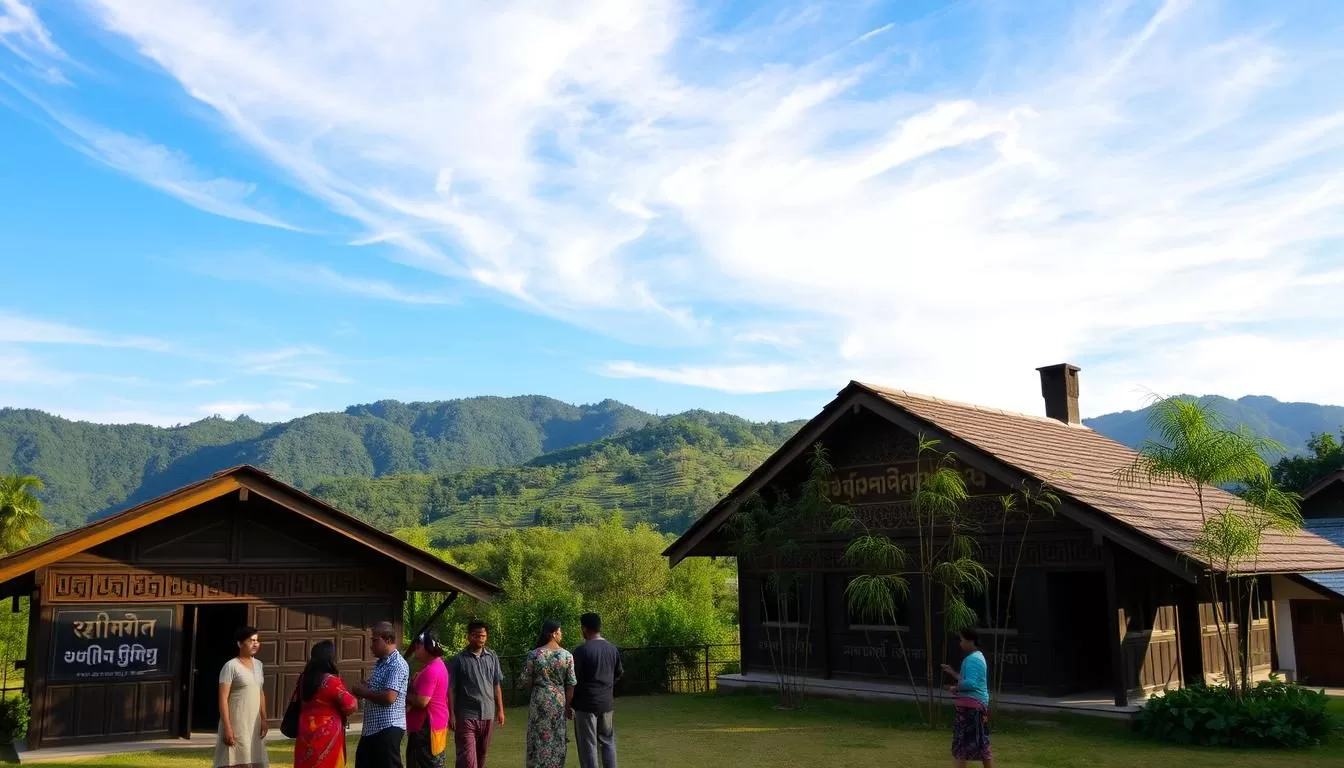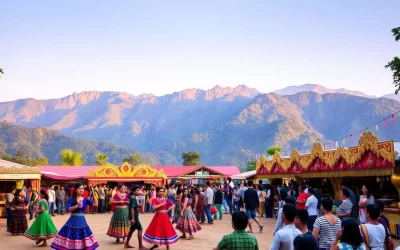✓ Accommodations ✓ Flights ✓ Rental Cars
You’ll discover a unique cultural identity in Mizoram, a northeastern state of India, characterized by its distinct language profile.
The Mizo language, a Tibeto-Burman language, is not only the official language but also the lingua franca of the region, playing a vital role in daily life, administration, and cultural heritage.
As you explore the region‘s linguistic makeup, you’ll find that the Mizo language is spoken not only in Mizoram but also in neighboring areas across India and beyond, reflecting the state‘s historical and cultural connections.
Mizoram: A Linguistic Overview
As you explore Mizoram, you’ll discover a rich tapestry of languages influenced by the region‘s complex history and terrain. The state’s unique geographical position, bordering Myanmar and Bangladesh, has significantly impacted its linguistic development over the centuries.
Geographical and Cultural Context
Mizoram’s mountainous terrain has contributed to linguistic isolation and diversity, with different dialects developing in valleys separated by high ridges. The people of Mizoram, primarily belonging to Scheduled Tribes, maintain their linguistic identities while sharing common cultural traits. The state’s cultures are deeply intertwined with the languages spoken by its population.
- The geographical isolation has allowed various Mizo dialects to flourish.
- Cultural exchange with neighboring regions has enriched the linguistic diversity.
Historical Development of Languages in the Region
The historical development of languages in Mizoram is a story that spans centuries, from pre-colonial times through British rule to independence and statehood. Christian missionaries in the late 19th century played a crucial role in shaping the linguistic landscape by introducing written scripts and promoting literacy. The groups within Mizoram have maintained their linguistic heritage despite external influences.
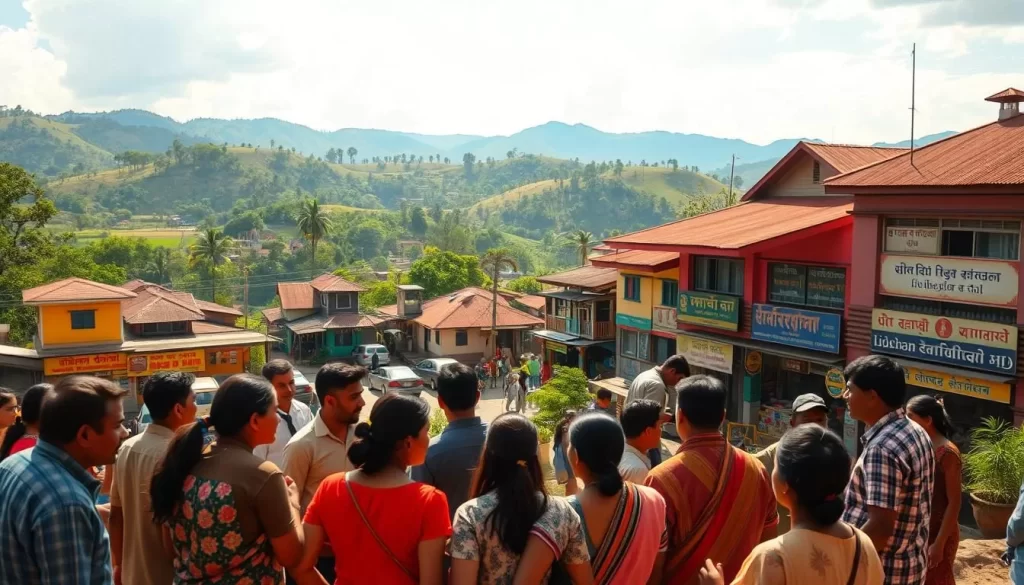
Mizoram, India: Official and Widely Spoken Languages
Understanding the languages of Mizoram is essential to grasping the state’s cultural and administrative fabric. You are about to explore the intricate linguistic landscape of this northeastern Indian state.
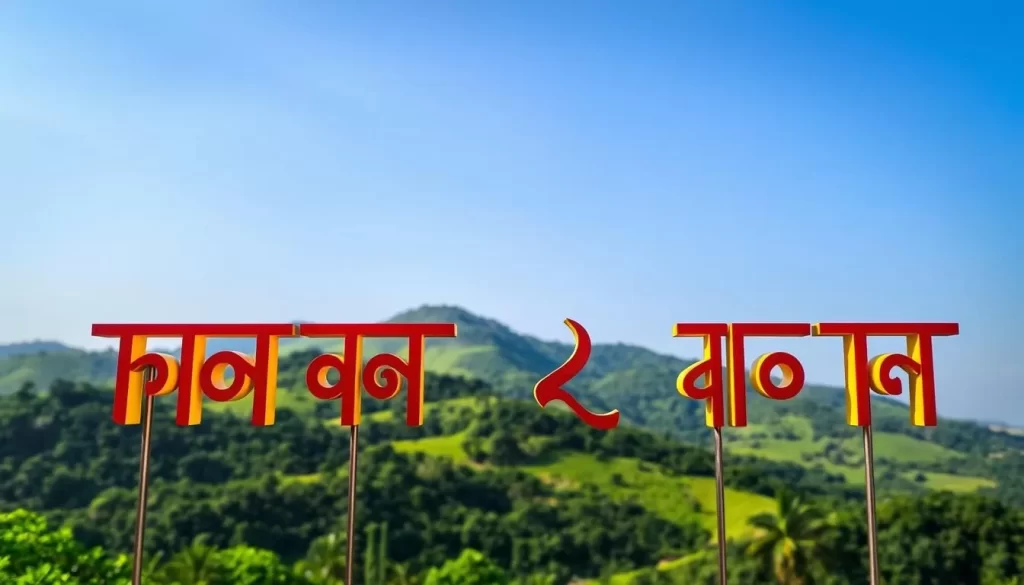
Mizo as the State’s Official Language
Mizo is the official language of Mizoram and serves as a lingua franca among various ethnic groups in the region. It is the medium of instruction in schools up to the higher secondary level, playing a crucial role in preserving and promoting the language among younger generations. The use of Mizo in education has been instrumental in maintaining its relevance and importance in the daily lives of the people.
Role of English in Administration and Education
English is the co-official language in Mizoram, particularly significant in higher education, the judiciary, and administration. The bilingual administration in Mizoram has practical implications for citizens’ access to government services, with both Mizo and English being used in official capacities. This bilingual approach ensures that the state remains accessible to both local and broader national and international communities.
Status of Hindi and Other Recognized Languages
Hindi serves as a link language with the rest of India and plays a role in education and interstate communication. Besides Mizo and Hindi, other recognized languages in Mizoram have their status at different administrative levels, contributing to the state’s linguistic diversity. The recognition of these languages underscores the state’s commitment to preserving its rich cultural heritage.
You can see that the linguistic landscape of Mizoram is a blend of traditional and modern elements, with Mizo at its core. The state’s language policies reflect a balance between preserving local culture and engaging with the wider world.
Linguistic Diversity Across Mizoram
You’ll find that Mizoram’s linguistic diversity is a fascinating reflection of its geographical and cultural heritage. The state’s linguistic landscape is characterized by a variety of languages and dialects, each with its own unique characteristics and regional variations.
Mizo Dialects and Regional Variations
Mizoram is home to several dialects of the Mizo language, which vary across different regions. The Mizo language, also known as Lushai, is part of the Tibeto-Burman language family. The dialects spoken in different parts of the state have distinct features, shaped by historical, cultural, and geographical factors. For instance, the dialect spoken in the capital city, Aizawl, is considered the standard form of Mizo.

The table below summarizes some of the major dialect groups within the Mizo language and their characteristics:
| Dialect Group | Regions | Characteristics |
|---|---|---|
| Lushai | Aizawl, Champhai | Standard Mizo, widely understood |
| Pawi | Lawngtlai, Saiha | Distinct tonal system, unique vocabulary |
| Lakher | Saiha, Lawngtlai | Influenced by neighboring languages, distinct grammar |
Other Tibeto-Burman Languages in Mizoram
Apart from Mizo, other Tibeto-Burman languages are spoken in Mizoram, contributing to the state’s linguistic diversity. These languages are spoken by various groups and have their own distinct features and speakers. For example, the Chakma language, although part of the Indo-Aryan language family, is spoken by the Chakma people.
Cross-Border Language Connections with Myanmar and Bangladesh
Mizoram’s linguistic diversity is not isolated; it is connected to languages spoken in neighboring countries, particularly Myanmar’s Chin State and Bangladesh’s Chittagong Hill Tracts. The Tibeto-Burman language family ties these regions together, facilitating cultural exchange and maintaining historical ties across international boundaries. Many speakers of Mizo and related languages live in these border regions, creating a shared linguistic heritage.
The Mizo Language: Features and Characteristics
Understanding the Mizo language requires delving into its tonal patterns, grammatical nuances, and literary traditions. As a tonal language, Mizo is distinct from many other Indian languages, with pitch variations significantly altering word meanings.
Phonology and Tonal System
The Mizo language is characterized by its complex tonal system. It has eight tones and intonations for vowels like ‘a’, ‘aw’, ‘e’, ‘i’, and ‘u’. The vowel ‘o’ has only three tones, all of which are reduced. This tonal complexity is a hallmark of the Mizo language, making it both challenging and fascinating to learn.
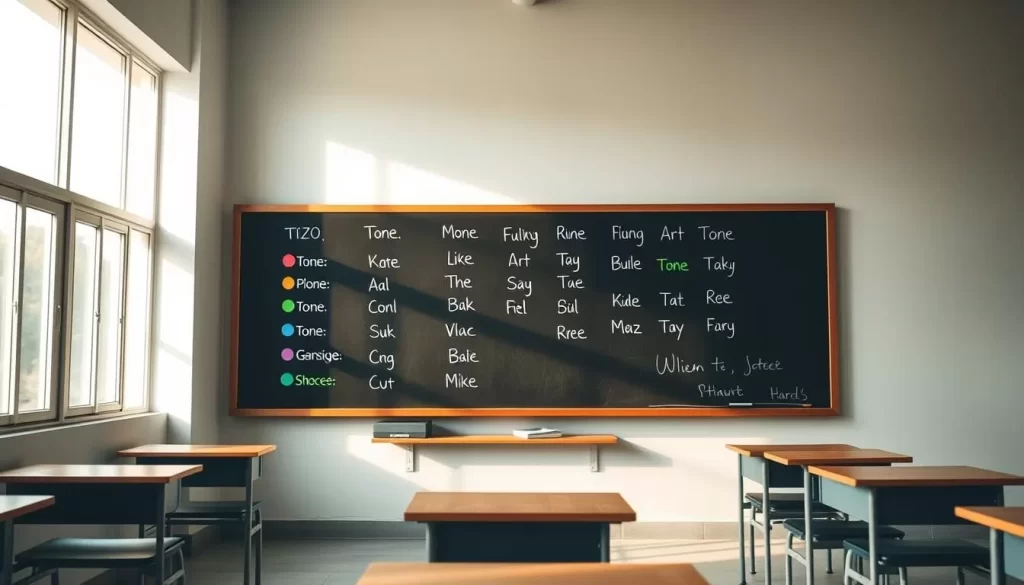
Grammar Structure and Vocabulary
In Mizo, verb tense is indicated by aspect and the addition of particles, showcasing a unique grammatical structure. The language’s vocabulary is rich and diverse, reflecting the cultural heritage of the Mizo people.
| Feature | Description |
|---|---|
| Tonal System | Eight tones for vowels ‘a’, ‘aw’, ‘e’, ‘i’, ‘u’; three tones for ‘o’ |
| Verb Tense | Indicated by aspect and particles |
| Alphabet | Based on Roman alphabet, 25 letters |
Writing System and Literacy
The Mizo alphabet is based on the Roman alphabet and consists of 25 letters. The writing system was developed by Christian missionaries, notably J.H. Lorrain and F.W. Savidge, based on the Hunterian system of transliteration. This system has enabled the creation of a rich literary tradition in Mizo.
Literature and Media in Mizo
Mizo literature has evolved significantly from oral traditions to written forms, reflecting the cultural values and historical experiences of the Mizo people. The language is used in various media, including newspapers, radio, television, and digital platforms, which play a crucial role in preserving and promoting the Mizo language.
Conclusion: Language Preservation and Future Outlook
As we conclude our exploration of the linguistic landscape of Mizoram, it’s clear that the Mizo language plays a vital role in the state’s cultural identity. You have seen how this language is not only a means of communication but also a symbol of the community’s heritage.
The increasing prevalence of English in education and professional spheres poses a challenge to the vitality of Mizo among younger generations. However, efforts to modernize the language and make it relevant in the digital age are underway. The development of Mizo keyboards and online resources is a positive step towards preservation and promoting its use.
You will be interested to know that the future of Mizo looks promising due to its status as the official language of Mizoram and its strong cultural significance. As the world becomes more interconnected, the importance of preserving regional languages like Mizo becomes increasingly evident. With continued support for education and preservation efforts, the Mizo language is likely to thrive, serving as a valuable part of Mizoram’s identity in the world of diverse languages and cultures.
The above is subject to change.
Check back often to TRAVEL.COM for the latest travel tips and deals.
